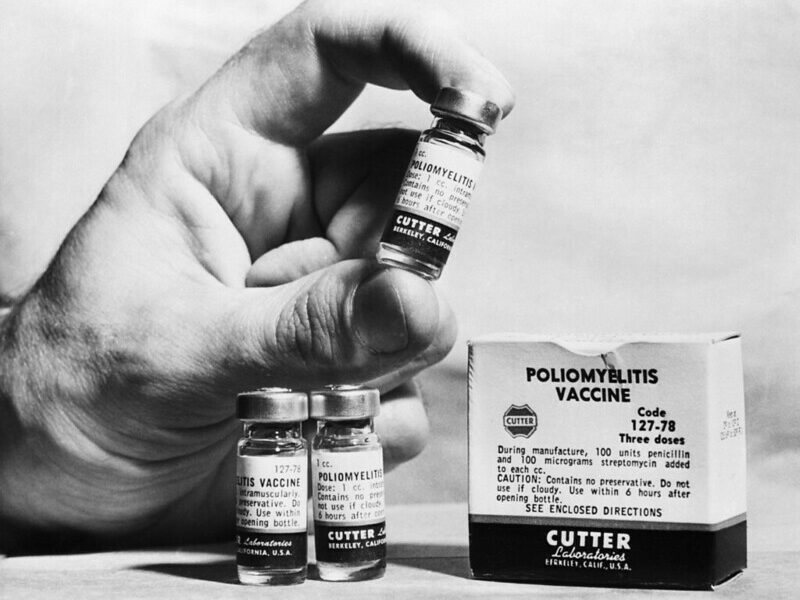On Friday night, four children in China’s Xinjiang province were diagnosed with polio, a virus absent from China for over a decade.
The poliovirus can cause irreversible paralysis and has no cure.
The Global Polio Eradication Initiative (a partnership between national governments, World Health Organization, Rotary International, United Nations Children’s Fund, and US Centers for Disease Control and Prevention) reports that each child is infected with the wild poliovirus. The wild virus has not existed in China since 1999. Public health officials believe this wild virus is related to the virus currently in circulation in Pakistan.
The Chinese Ministry of Health is sending public health experts to the Xinjiang province to assist with prevention activities. China is further planning to immunize 4.5 million children in the area between now and September.
The Xinjiang province shares borders with three of the polio endemic countries: India, Pakistan and Afghanistan. These recent cases cause concern over the impassibility of China’s borders.
Coincidentally, four cases of polio have also been reported in Peru, a country that has not seen an indigenous case of the virus since 1991. According to an article from Peru’s El Comercio, the cases are associated with the polio vaccine itself and do not indicate an outbreak in Peru. These cases serve as a reminder that the vaccine should not be given to immune-compromised individuals who may be at risk for developing the vaccine version of the disease instead of immunity against future infection.
Q & A: Polio
What exactly is polio?
Polio is a virus that is transmitted through phlegm or mucus from the nose or mouth, or by fecal matter. Once the virus is in the host, it travels to the intestines where it passes into the blood stream and infects the lymph system (a system of organs, lymph nodes and vessels that transport lymph to bloodstream. Lymph is a fluid containing white blood cells, proteins and fats).
What are the symptoms?
Incubation period (when the virus is in the system but the host does not show symptoms) may last form 5-35 days, though the average period is 7-14. Symptoms can include: fever, vomiting, stiffness in back and neck, diarrhea, excessive fatigue, abnormal reflexes, difficulty swallowing, asymmetrical muscle weakness that may lead to paralysis.
Who is at risk?
According to the World Health Organization (WHO), children under 5 are most at risk. Pregnant women and the elderly are also at risk.
Is there a cure for polio?
Currently, there is no cure for polio.
How can I prevent my child from getting polio?
There are two types of vaccines for polio. Until recently, the oral polio vaccine (OPV) was used in the United States. This vaccine was integral to ridding the United States of polio and is still used in many countries outside of the US. But the CDC no longer recommends using OPV as it sometimes infects people with the virus rather than protects them from it. This is because the vaccine is created from a live poliovirus.
Inactivated polio vaccine, or IPV, is a shot that is given in the United States today. The CDC recommends that people with allergies to neomycin, streptomycin or polymyxin B should not get IPV. For most people, IPV has not presented any problems.
The inactivated polio vaccine is normally given to children in three doses before the age of two and a booster shot between the ages of four and six.
Global Polio Eradication Campaign
The highly contagious, and sometimes deadly, smallpox virus, that had plagued the world for centuries, was successfully eradicated in 1980. Eight years later, optimistic from their victory over smallpox, the World Health Organization (WHO), Rotary International, United Nations Children's Fund (UNICEF) and the United States Centers for Disease Control (CDC) signed a resolution for the worldwide eradication of polio.
Twenty-three years later, we see a 99 percent reduction in polio cases, but there are still four countries that remain polio endemic: India, Nigeria, Afghanistan and Pakistan.
There are three conditions that must be met before the WHO declares a region polio-free:
- Three years with no documented polio cases
- Disease surveillance must meet international standards; and
- The region/country in question must demonstrate the ability to detect, report and respond to foreign or “imported” polio cases
WHO strategies to combat the polio virus include: the oral poliovirus vaccine administered to infants in first year of life, supplementary immunization activities (SIAs) for children under five years old in targeted countries, and surveillance for wild poliovirus and testing of all cases of paralysis in children under fifteen years of age.
